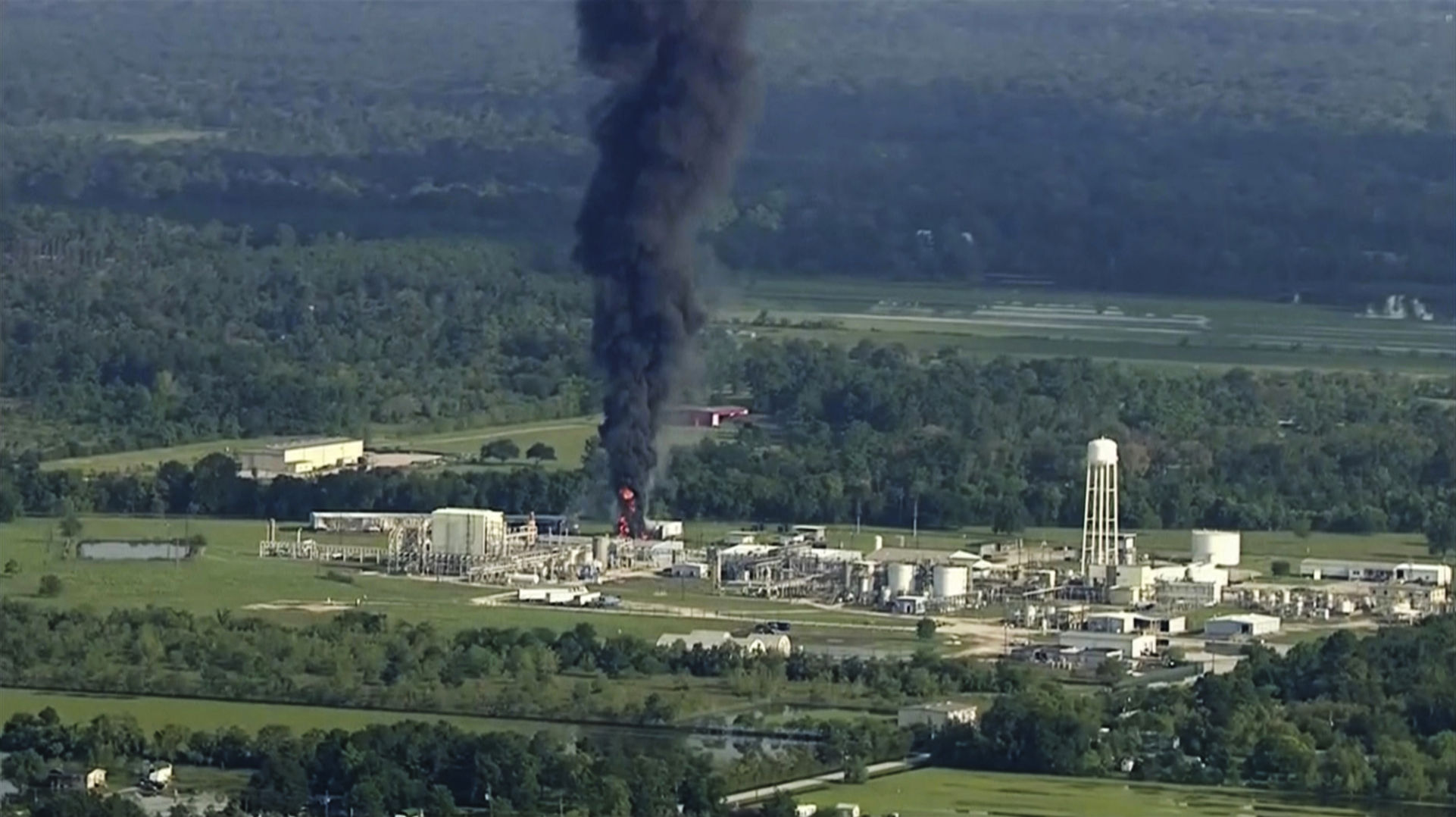DALLAS (AP) — Tests detected toxic substances in soil, water and ash samples taken from residents’ property miles away from a Houston-area chemical plant that flooded during Hurricane Harvey, caught fire and partially exploded, according to a class-action lawsuit filed
DALLAS (AP) — Tests detected toxic substances in soil, water and ash samples taken from residents’ property miles away from a Houston-area chemical plant that flooded during Hurricane Harvey, caught fire and partially exploded, according to a class-action lawsuit filed Tuesday.
The 15 residents named as plaintiffs link the toxins to products stored or made at Arkema Inc.’s facility in Crosby, about 25 miles (40 kilometers) northeast of Houston, and say the releases violated environmental protection laws.
The residents fault Arkema and its France-based parent company for failing to take more precautions to control flooding — the plant is in a government-designated flood plain — and to fully warn them about the health risks of smoke and water from the site.
According to the lawsuit, one woman’s two daughters had respiratory trouble and headaches after moving back into their home, where the toxins were found. Another plaintiff, Shannan Wheeler, told The Associated Press that he found gooey black deposits in his flower beds and developed a thick, scaly rash while picking up grass clippings after mowing following the final fire.
“The third or fourth scoopful, I noticed the stinging, the tingling,” said Wheeler, noting that his doctor told him scarring was likely. “The next one was like, ‘Damn it.’ I thought I’d gotten in ants. It started getting red. I kept picking up. After two more, I said that’s enough, something’s wrong here.”
In a written statement Tuesday, Arkema said it hasn’t detected chemicals in off-site sampling that exceeds levels for clean-up set by the state’s environmental agency.
“We don’t know what these lawyers tested for,” the company wrote, saying that it wouldn’t comment further on the lawsuit.
The company has previously declined to say which chemicals were released during the fire or discuss how large its inventory quantities were prior to the incident. It provided only the names of its chemicals on its website last month after days of public pressure.
Arkema’s legal troubles have widened in the past week. The civil attorney and the criminal district attorney for Harris County, which includes Houston, announced a pending lawsuit and investigation.
The Texas Commission on Environmental Quality and U.S. Chemical Safety Board announced last month that they were investigating.
And a group of about two dozen homeowners and first responders are part of a state lawsuit that seeks more than $1 million. They also blame Arkema for sickening them and failing to fully warn them about the hazards.
Arkema executives have insisted that they planned for flooding conditions, bringing in backup generators and moving containers with the chemicals to higher ground. Accident plans the company had filed with the U.S. Environmental Protection Agency in recent years noted that hurricanes, flooding and power loss were potential hazards, but it didn’t explain what it would do if faced with them.
Despite a National Hurricane Center warning on Aug. 27 that areas around Houston could get 50 inches (130 centimeters) of rain, company officials said they couldn’t have predicted the unprecedented flooding.
As Harvey dumped the rain, Arkema’s power and generators at its Crosby facility failed, leading refrigeration systems to shut down. That caused its organic peroxides, used in a range of products from plastics and paints, to destabilize.
Arkema abandoned the facility Aug. 29 after, executives have said, as much as 6 feet (1.8 meters) engulfed it. A mandatory 1.5-mile (2.4-kilometer) evacuation zone was created in anticipation of a fire and explosion, displacing hundreds of residents for about a week.
After one container storing hazardous materials caught fire Aug. 31 and exploded, an Arkema executive claimed that smoke from that was a “non-toxic irritant.” Fifteen responders were treated for exposure at local hospitals.
On Sept. 4, after a second container caught fire and then the remaining others were burned under supervision, an executive said Arkema’s air-quality testing within the evacuation zone had shown “no evidence of any issues.”
But the class-action lawsuit, filed in a Houston federal court, said several residents had found “strange black ash” and “black residue” on the ground after each Arkema explosion sent plumes of smoke in the air.
Scientific testing of samples —collected up to 6 miles away — found materials from multiple families of toxic chemicals, according to the suit.
The toxins identified include volatile organic compounds, which can cause cancer, and harmful polycyclic aromatic hydrocarbons formed during the incomplete burning of organic substances. The lawsuit said tests also detected dioxins and furans, which the EPA has said may change hormone levels in those exposed.
“Given the toxicity of the substances released,” according to the lawsuit, “the 1.5-mile perimeter was not far enough to adequately protect either first responders or those living beyond the perimeter who were not evacuated.”
In 2016, an analysis led by Texas A&M University researchers identified Arkema’s facility as one of the biggest risks in a corridor with the country’s greatest concentration of petrochemical plants.
State and federal regulators have penalized the plant multiple times in the last decade. In June 2006, for example, Arkema failed to prevent unauthorized emissions during a two-hour warehouse fire. In February, the U.S. Occupational Safety and Health Administration fined Arkema more than $90,000 for of 10 serious safety violations found during an inspection.
———
Sign up for the AP’s weekly newsletter showcasing our best reporting from the Midwest and Texas: http://apne.ws/2u1RMfv


